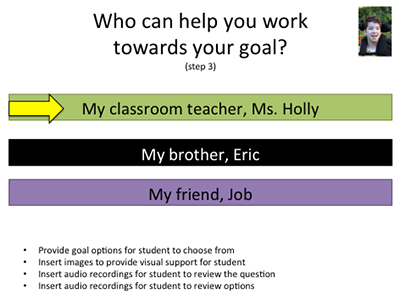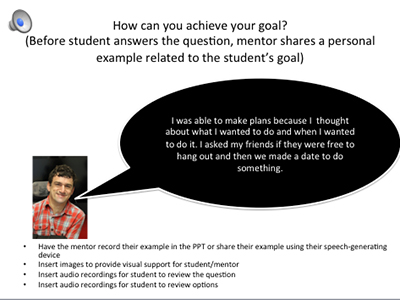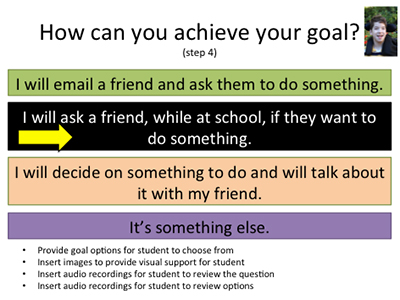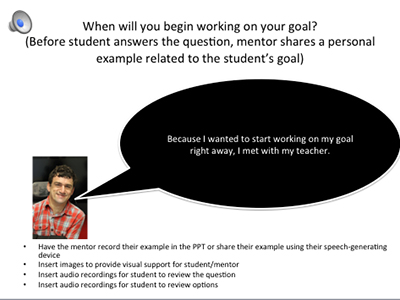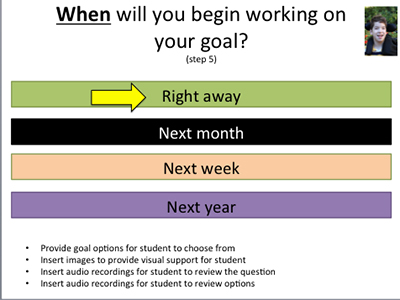Activity 3: My Goal Planning Guide
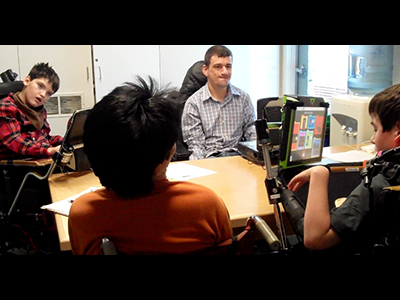
Learning to formalize a plan: Students choose a goal and develop a step-by-step plan.
Purpose
Mentees use a goal planning guide to develop their plan to work towards their goals. (Adapted from Kids Health – Making a Change)
Materials
Mentor Preparation
Mentors:
- review each student’s individual goal
- review the My Goal Planning Guide assignment
- determine who will introduce the activity
- prepare a personal example for each planning step
Activity
The My Goal Planning Guide activity is one way for students to develop a plan to work towards their goals. The planning guide used in this activity has 6 steps.
Mentors introduce the activity and lead students through their goal planning guide. Prior to each step of the Guide, mentors share personal examples. Having mentors share an example may help students think about the individual steps of their guide.
Step 1: What is your goal?
Students write the goal that they want to work toward.
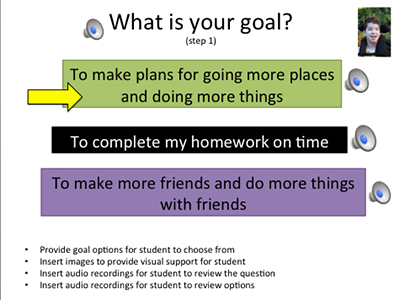
Step 2: Why did you choose this goal?
Students are asked to think about and then write down the reasons that they personally want to achieve the goal they have selected.
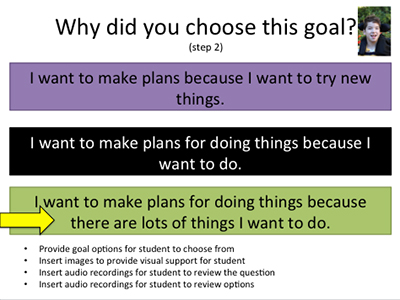
Step 3: Who can help you work towards your goal?
Students identify the individuals who can support them in working towards their goal. In addition to their mentor and teachers, students should also select the people who can be most helpful in achieving a particular goal. For example, mentee Job, chose his teacher, Clark, because he felt Clark knew him really well.
Step 4: How can you achieve your goal?
Students think about how they can accomplish their goal by identifying the things they can do to make sure it will happen.
Step 5: When will you begin working on your goal?
Students are encouraged to set a start date that is realistic in relation to all of their other commitments after considering everything that needs to be in place.
Step 6: Where will you work on your goal?
Students are asked to decide where they want to work towards their goal (e.g., on the playground, in their inclusion classroom, at home, in their community, etc.)
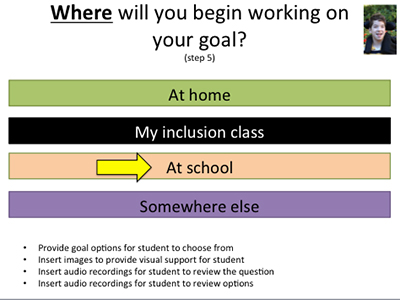
Step 7: What parts of your guide would you like to share with the group?
The last step in the My Goal Planning Guide activity is for students to summarize the information into a single document that they can refer to as well as share the steps they have identified to work towards their goal.
Mentees complete their My Goal Planning Guide with their mentor and come back together to share their plan with the group.
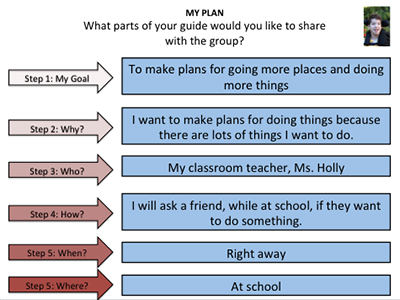
Adaptations
- Encourage students to work in pairs or small groups to assist one another
- Provide visual/auditory access – use PowerPoint with auditory recording support
- Read My Goal Planning Guide aloud to student
- Students can generate their responses using their speech-generating devices, or they can use partner-assisted strategies with communication boards
- Offer multiple choice – allow student to select from 3-4 options within a set of plausible options based upon known student information
- Print out personal plans and post them as guides so students can view
- Break down activity into multiple sessions (if necessary)
- Refer to the complete Making a Plan Activity in the Plan & Act unit for additional steps
Additional Adaptations
- Provide student with a talking word processing program and/or word prediction for spelling support
- Provide alternate input methods (e.g., speech-generating devices, alternate keyboards) – so students can type responses directly into answer fields on the form
- Use partner-assisted strategies with communication boards so students can dictate their responses
- Use partner-assisted auditory-scanning or computer assisted scanning as needed
- Offer dictated writing strategy for students who do not have access to independent writing tools, where the student communicates a response to someone, who then writes it down for them
- Students use an authoring tool with text-to-speech capability to hear the vocabulary words aloud and answer fields to enter their responses independently
Resource
“TeensHealth: Making a Change: Your Personal Plan.” KidsHealth – the Web’s Most Visited Site about Children’s Health. The Nemours Foundation, n.d. Web. Mar.-Apr. 2013. http://kidshealth.org/misc/javascript/js_apps/planners/making_a_change_module.html


